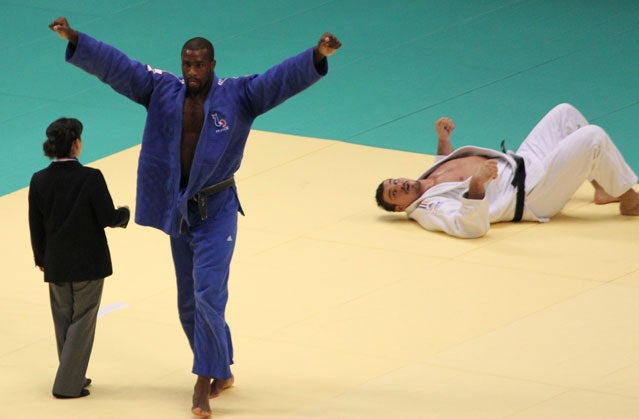HOW DOES IT WORK?
Judo is played (I think you “play” judo) on a 26×26-foot zone on a larger mat. The goal is to achieve an “ippon,” which is basically a knockout. That is done by throwing your opponent to the ground with “control, force, and speed,” getting your opponent to concede while in a hold, or immobilizing your opponent on the ground for 25 seconds. You can also achieve an “ippon” with four “shidos,” which are basically warnings. A clean throw of your opponent onto his/her back or immobilizing him/her for less than 25 seconds are both awarded an arbitrary number of “shidos.” Warnings for passiveness and dangerous play are also worth “shidos.” The men and women each have seven weight classes, and medals will be awarded every day from July 28 through August 3.
HISTORY
Men’s judo has been in the Olympics since 1964, while the women’s competition was introduced in 1992. Japan is the best judo nation. They’re also probably the second, third, and fourth best judo nation as their 65 medals are 18 more than France and South Korea, who are tied for second—or fifth. Japan’s 35 golds lead the way as well—25 more than France’s 10.
WHO IS THE BEST?
A bunch of Japanese people, right? Well, sort of. Japan’s stranglehold on the sport has loosened over the last 10 years with stronger judokas—judo term for someone who does judo—overpowering the more traditional, technique-oriented Japanese. But recent rule changes have pushed the sport back toward the Japanese style. I’m not exactly sure how that’s fair, but apparently it makes it easier to watch and follow along with, so thanks?
Japan should win the most golds, especially with the recent rule changes, but the biggest favorite, out of the 14 male and female weight classes, is probably Frenchman Teddy Riner. He’s 6-foot-8, 280 pounds and has won gold in the past five World Championships. Also: his nickname is “Teddy Bear,” and he’s actually probably scarier than any real bear because he’s a human being who is the same size as a bear. Oh, and he’s 22 years old. Watch out, world.
DOES THE U.S. HAVE A CHANCE?
Does it matter? Teddy Riner! But Kalya Harrison, the 22-year-old, 78-kilogram-class judoka, actually has a legitimate shot at gold. She won the 2010 World Championship and came in third last year. She’ll be competing on August 2. A few other Americans have an outside shot at a medal (judo awards two bronze medals in every weight class), but none of them are expected to challenge for gold.
SUGGESTED READING
“” by Jessica Creighton


